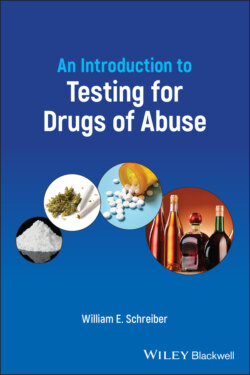Читать книгу An Introduction to Testing for Drugs of Abuse - William E. Schreiber - Страница 30
Types of Specimens Blood
ОглавлениеBlood is the specimen of choice for assessing the amount of active drug in a patient. This information is required in a number of situations, such as:
monitoring the concentration of a prescribed drug to ensure therapeutic levels are present (eg, carbamazepine in a patient with epilepsy)
measuring the amount of a potentially toxic drug to guide therapy and assess prognosis (eg, acetaminophen in a patient who took an overdose)
identifying a cause for altered mental status (eg, ethanol in a comatose patient).
In most cases, drugs are measured in serum. Whole blood is required for certain analyses, because the drug or toxin of interest accumulates within red blood cells.
Collecting blood is an invasive procedure – inserting a needle through skin into a vein – and it causes anxiety and discomfort to some patients. Experienced phlebotomists can draw blood with little or no associated pain, and they ensure that the sample is from the person on whom it was ordered.
